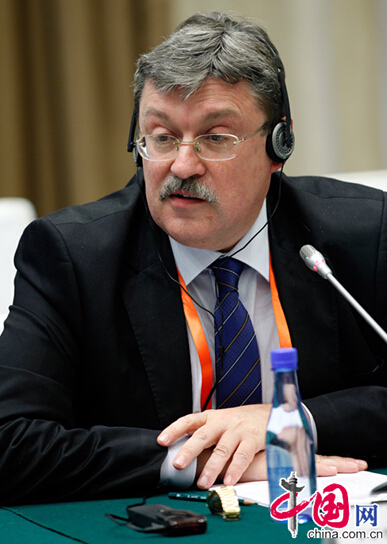Paper abstracts: Predrag Simic
 0 Comment(s)
0 Comment(s) Print
Print E-mail China.org.cn, June 27, 2014
E-mail China.org.cn, June 27, 2014
 |
|
Predrag Simic |
Predrag Simic
(Professor, University of Belgrade)
Author
Professor Predrag Simic was head of Department of International Relations, Faculty of Political Science, University of Belgrade (2009-2012), and Professor at University of Montenegro, Podgorica. He is also former Ambassador of Serbia to France (2004-2009). He was Director of Diplomatic Academy, Ministry of Foreign Affairs of Serbia and Montenegro. He served as Member of the Advisory Board of the International Institute for Peace, Vienna. He was also Member of the Editorial Board of the journal International Politics (Kluwer Law International, The Hague). He was Deputy Minister for Foreign Economic Relations, Transitional Government of Serbia during October 2000 and January 2001 and Foreign Policy Adviser to the President of the FR Yugoslavia. He is also Senior Research Fellow, Institute of International Politics and Economics, Belgrade.
Abstract
This paper argues that the relations between People’s Republic of China and Southeast Europe after 1949 passed through three stages. In the first stage that lasted from the beginning of the 1950s till the second half of the 1970s, China established diplomatic relations and began to engage in economic relations with these countries, but conditioned by the Cold War and the bipolar division of the world. The second stage started in 1977 with the normalization of diplomatic relations between China and Yugoslavia and other countries in the region, as part of China’s policy of opening to the world. While China’s relations with the Southeast European countries throughout this period were driven by political motives, post-Cold War economic interests come to the first place. In the 1990s numerous Chinese immigrants came to this region and started thousands of small and medium sized companies supplying local markets with affordably priced Chinese goods. In this period some of Southeast European countries made unsuccessful attempts to invest in China. This trend continued after year 2000 with the arrival of large Chinese investors and the choice of the Greek port of Piraeus for one of the entry points for Chinese export to Europe. A major step in this direction was the summit meeting of China and the 16 countries of Eastern Europe, held in Bucharest in November 2013, when China announced significant investments in the region. Reactions to these projects in Europe, however, are divided: While Chinese investment was well received in the crisis-ridden Eastern Europe, in Western Europe they met with doubts that, even though they can help to overcome economic crisis, they could diminish the influence of the European Union in Eastern and Southeastern Europe.
Saleh Al Sagri





